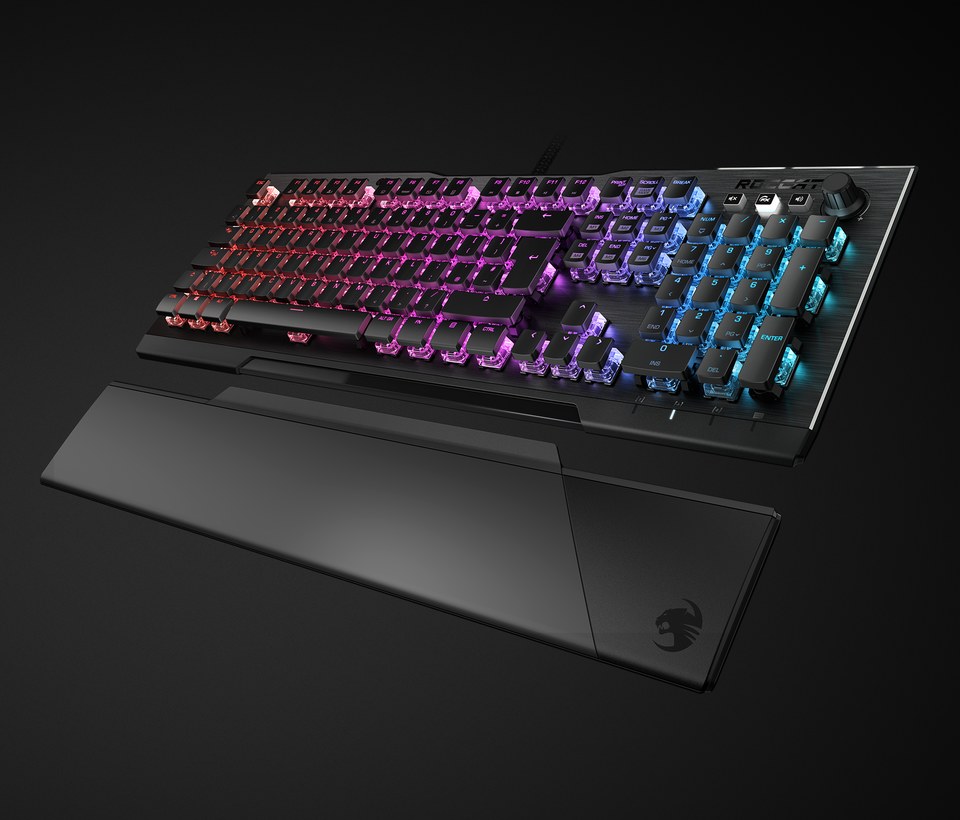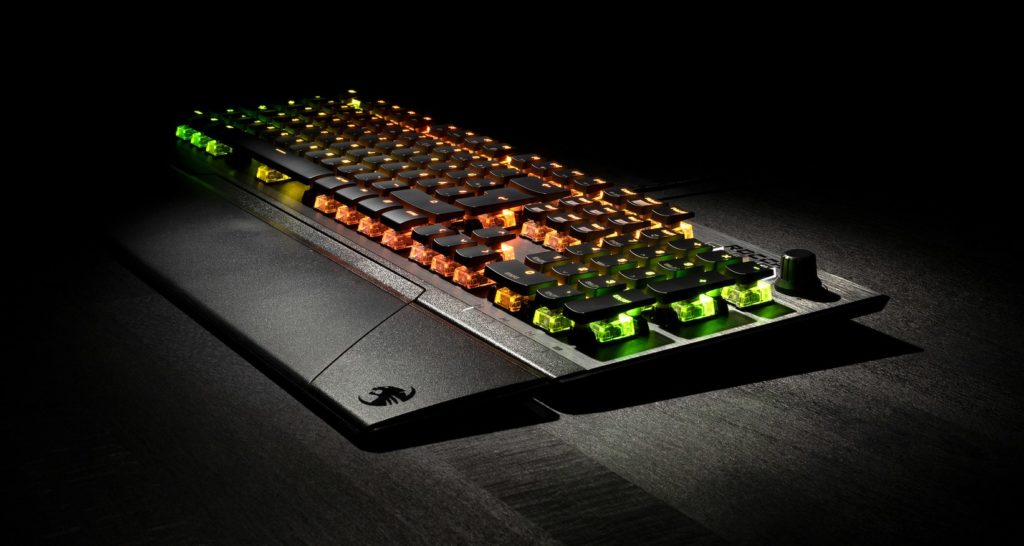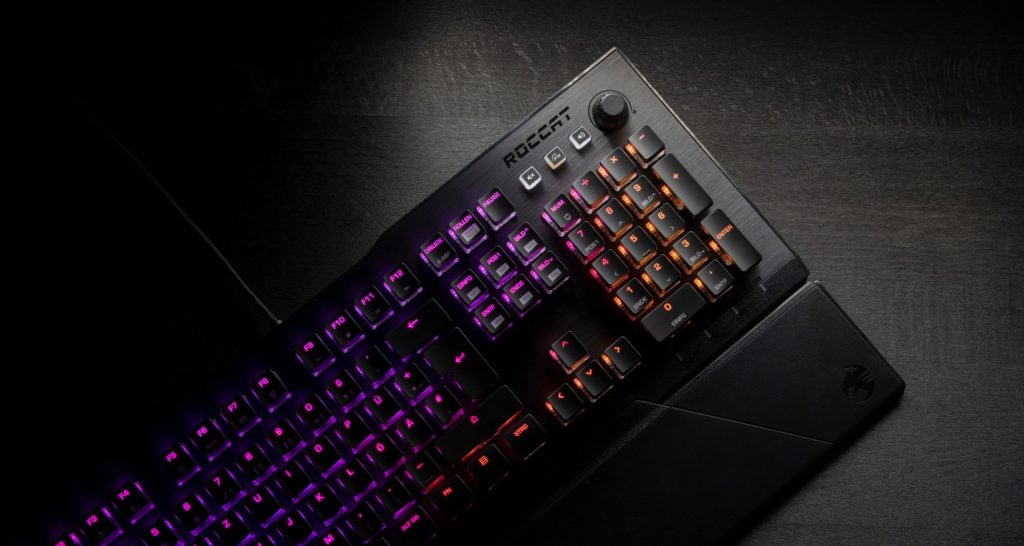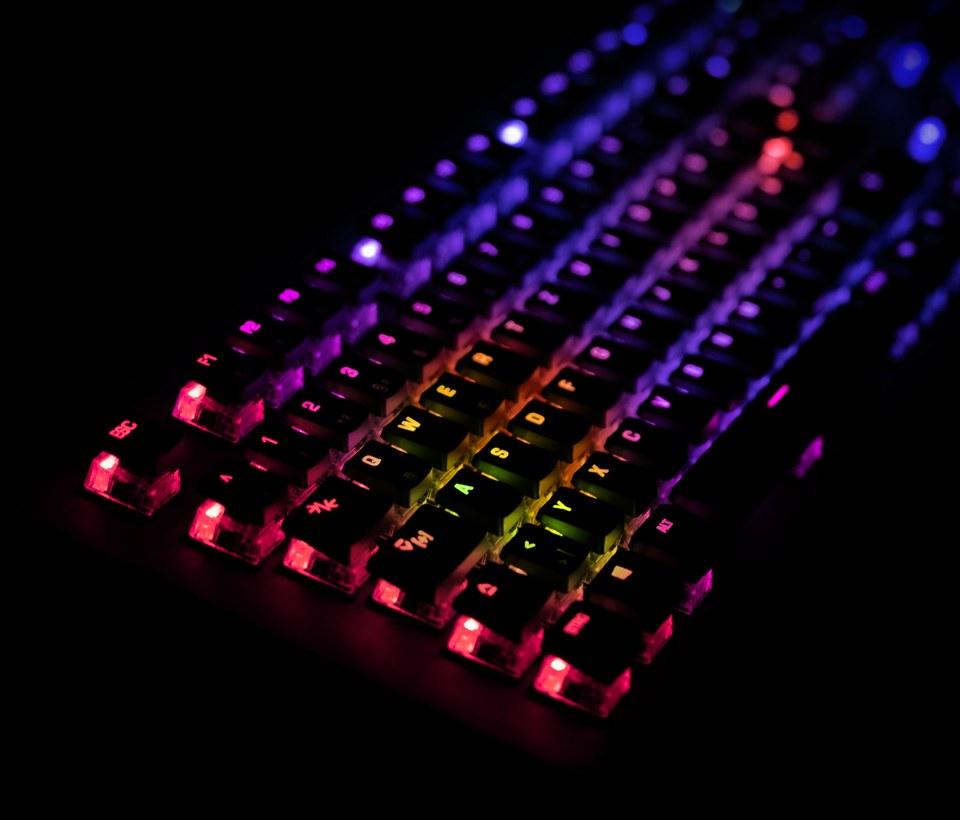- Manufacturer: Roccat
- Model: Vulcan 121
- Type: RGB Gaming Keyboard
- Supplied by: Roccat

After the pleasure of using the Roccat KONE AIMO Remastered I was eager to see what the amazing minds behind that mouse could do with a keyboard. Flash forward a few months and I found myself the lucky recipient of the Roccat Vulcan 121 mechanical keyboard.
The looks of the Vulcan 121 are striking and hard to ignore. Stylish and sleek but still sharp and aggressive. The face of the Vulcan is made of anodized aluminium, making it extremely sturdy, and it gives it a premium feel that was cold to my first touch.
The aluminium face on the 121 is a brushed black satin colour, but there are also silver and white variants available depending on your preference.
Outlining the face is a polished and bevelled edge that really sets off the whole premium high-end feel. An added benefit is that the Aluminium face also seems to make the keyboard nearly entirely void of flex, and it feels extremely planted.
The remainder of the body is constructed of a hardy matt plastic. This surprisingly does not take away from the Vulcan 121’s premium feel, as the plastic itself still feels of an extremely high grade.
Returning to the face and possibly the most important feature, the Vulcan 121 features a really unique key set sitting on Roccat’s own Titan switches. The Vulcan I received to review came with the Titan linear keys that do not have the audible click associated with most mechanical keyboards.
I usually prefer a nice clicky switch and the feedback of the click fills me with satisfaction, but the Vulcan’s Titan linear switches have surprisingly provided my favourite typing and gaming experience so far. They may have no click but the noise they make paired with the sheer ease of each press makes for an absolutely divine typing experience.

The unique features do not end there, though. The Titan switch also features a completely clear casing so that it can make full use of the stunning Aimo illumination. Pairing the clear casing with the Vulcan’s short and almost flat keycaps makes for a stunning display. The RGB goodness flows out of the switches uninhibited and reflects off the aluminium body, making it a stunning sight that is a pleasure to customize.
This customization happens in the Roccat Swarm software. You have the general controls you’d expect including things like mode selection, including speed and colour palette adjustment, and the rest of the standard stuff, but you also have Intelligent Lighting.
In this mode, all of your Roccat AIMO products become linked and react to each other. When you click on your keyboard the effects could ripple across it and onto your mouse, and it’s amazing seeing all of your peripherals lighting and animating in unison.
Included on the Vulcan 121 is a full set of media controls, including three buttons and a volume dial. This is where my first dislike of this stunning board comes in. The three buttons that control the skip forward/back and play/pause functions are made of a soft rubber material. This allows a fair amount of illumination to pass through but also makes them the most unstable buttons I have used in a fair while. They have quite a bit of play in them and despite the satisfying click they make on actuation I’d have preferred a harder and more stable material for the buttons.

The dial, on the other hand, is perfect. It may seem at first to protrude too far, but with use and acclimation, it becomes extremely convenient. As you rotate it you will feel a tactile notching that allows you to fine-tune your audio click by click, making sure you have perfect control over your volume.
Cabling on the Vulcan 121 is fairly standard. Exiting at the centre of the back of the board is a non-removable braided cable that terminates in a USB-A connector, there are no routing channels on the bottom of the board but I usually find that I don’t use alternate routing even if it’s available.
Lastly, at the bottom of the board there is a slightly embossed glossy slot in the plastic. Although it adds to the design, it’s actually there for the palm rest to fit into. The Vulcan comes with a palm rest included, and it’s the second and last negative I have for the Vulcan. The palm rest is made of plastic with no form of softened coating on top, just hard, textured plastic.
I personally prefer to have a leatherette or some kind of plush covering over a hard surface and that really is the entire downfall for me. Otherwise, the palm rest not only looks very nice and attaches perfectly, melding into the Vulcan’s styling, but it also has a perfectly balanced magnetic attachment that I found easy to remove but never came off unintentionally.

Summary
The Vulcan 121 is a stunning board with amazing performance. As I expected after my use of the Kone Aimo remastered, the Vulcan excels when it comes to quality and looks. I would say that no matter what your usual preferences are, anyone who likes a good keyboard will struggle not to love the Vulcan.
The only things I would suggest as improvements are sturdier media buttons and a slightly comfier palm rest, but even with these very small cons, the Vulcan is a top contender to take up a permanent space on my desk (especially if I can get my hands on the Tenkeyless version).

